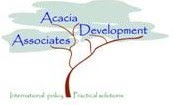The European Union (EU) is evaluating the first ten years of the Africa Peace Facility (APF). The APF was established following the African Union (AU) Summit in Maputo in 2003 as a means to finance (i) the development of African peace support capacity; and (ii) African-led peace support operations (PSO). It was originally funded from left over European Development Fund (EDF) resources – although it has from time to time been topped-up bilaterally by EU member states. The EDF origins of the APF have led to a rhetoric about shared ownership of the resources. Since it began, the APF has disbursed slightly in excess of one billion Euros – about 85% of which has gone on the financing the cost of various African PSO with the remainder spent on capacity building at AU and sub-regional level.
There appear to be differences of view within Europe about the purpose of the APF. This is perhaps characterised by some who contrast a one billion Euro investment with the total inability of ECOWAS to deliver a force to Mali – despite funds specifically allocated to this. But there are deeper tensions within Europe. Support for the APF as currently constituted is not rock solid. Africa (and some in the European Commission) would like to dispense with the capacity building element of the APF – largely because the PSO demand is vast and apparently bottomless; and partly because there are in fact other EU funds which could be used. But altering the balance between conflict management (PSO) and conflict prevention (capacity building) within the APF would almost certainly destroy it as some EU member states think that the purpose of the APF is actually capacity building.
Atmospherics
After ten years of the APF, a great deal of positive change is evident. The EU (at least at official level) is less patronising in its approach to the African partners and more willing to understand that the development process will be evolutionary and long. And the various African institutions rub along better than they used to. But the question of subsidiarity is still not yet resolved in Africa. This is leading to inefficiency and waste – both in terms of using donor funds and in terms of who does what in Africa.
Politics
The EU are clear that the APF is a funding instrument. This (narrow and technocratic) position is what enables them to be patient in terms of actual improved African capability. But it is quite clear that others in Europe are much clearer that they want some return for what is anyone’s book a large investment. There is a relative lack of any strategic link between the activities (and goals) of the APF on the one hand; and Europe’s wider political-security interests and concerns on the other. It is perhaps naive to assume that Europe will continue to pay out at this rate without some quid pro quo – a point which many Africans assume yet European seems to ignore.
Mission creep
The one area where European political-security interests seem to have had an impact is in the (always loose) definition of what the African Peace and Security Architecture (APSA) actually is. In 2003/4, APSA was largely about building institutions and capabilities: the Peace and Security Council; the Africa Standby Force; the Continental Early Warning System; the Panel of the Wise. Now the EU’s definition still includes these institutions but adds a number of specific effects or policy goals such as counter-piracy and maritime security. Africa does not seem to actually share the EU’s political-security goals in their entirety. The continent is still very much in a phase characterised by the management of operations and the development of institutional capacity. There is a gentle divergence between African and European ambition developing. This will likely lead to an increasingly a la carte approach to developing the APSA which is unlikely to be particularly helpful going forward.
C + C = C
Getting the best – for Europe and Africa – from a future incarnation of the APF will require more than just bureaucracy. The officials of the various inter-governmental organisations have a key role to play. They need to work to improve their cultural awareness of their partners within the APF; and to work to improve formal and informal communication between them. These two Cs will lead to improved confidence leading in turn to better outcomes. The formula for future APF success ought to be: Culture + Communications = Confidence.

No comments:
Post a Comment